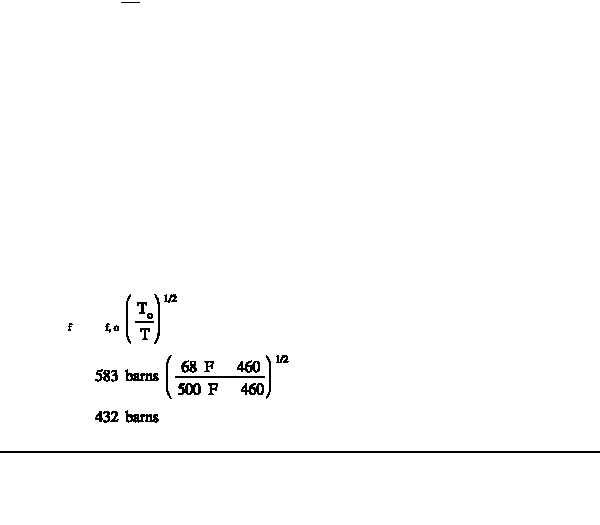)
)
)
)
DOE-HDBK-1019/1-93
NUCLEAR CROSS SECTIONS AND NEUTRON FLUX
Reactor Theory (Neutron Characteristics)
NP-02
Page 14
Rev. 0
Effects of Temperature on Cross Section
As discussed, the microscopic absorption cross section varies significantly as neutron energy
varies. The microscopic cross sections provided on most charts and tables are measured for a
standard neutron velocity of 2200 meters/second, which corresponds to an ambient temperature
of 68 F. Therefore, if our material is at a higher temperature, the absorption cross section will
be lower than the value for 68 F, and any cross sections which involve absorption (for example,
)
, ) , ) ) must be corrected for the existing temperature.
a
c
f
The following formula is used to correct microscopic cross sections for temperature. Although
the example illustrates absorption cross section, the same formula may be used to correct capture
and fission cross sections.
where:
)
= microscopic cross section corrected for temperature
)
= microscopic cross section at reference temperature (68 F or 20 C)
o
T
= reference temperature (68 F) in degrees Rankine ( R) or Kelvin ( K)
o
T
= temperature for which corrected value is being calculated
NOTE: When using this formula, all temperatures must be converted to R or K.
R
= F + 460
K
= C + 273
Example:
What is the value of ) for uranium-235 for thermal neutrons at 500 F? Uranium-235
f
has a ) of 583 barns at 68 F.
f
Solution:




